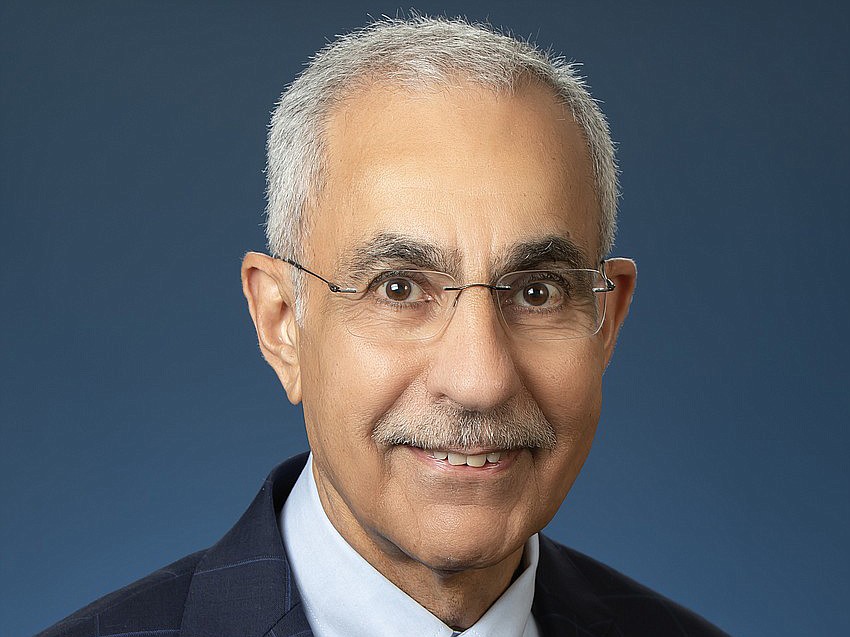
Developer Steve Atkins returned to City Hall on July 22 to discuss his latest proposal to restore the Laura Street Trio with the Special Committee on the Future of Downtown. The new deal includes $18.3 million in city loans and $67.47 million in development grants totaling $85.77 million. Development costs total $188.67 million.
Atkins proposes a combination of restoration and new construction that would turn the Trio into a hotel, apartments and restaurants. The Trio was built from 1902-12 at Laura, Forsyth and Adams streets. It comprises the Florida National Bank, Bisbee and Florida Life Insurance buildings.

On June 28, the Downtown Investment Authority board voted 6-0 in favor of a resolution to end negotiations with the Trio’s developer, SouthEast Development Group, led by Atkins.
That SouthEast proposal contained a project cost of $194.2 million and a request for $89.9 million in city incentives, according to DIA records.
The resolution calls for the city not to entertain further incentive requests for the project unless SouthEast brings more of its own equity to the table or finds partners who can provide additional funding.

Atkins said those negotiations ended after going “back and forth” with the DIA, that “many deals were presented before the authority said the project was not feasible.”
He requested to deal directly with the Council moving forward after the DIA vote.
“But we did not stop and we continued to work on our structure, our financial options for the project. We have added $15 million in cash equity to the project since that time and secured financing at a much lower rate,” he said.
New proposal
Atkins is proposing a seven-year $10 million development loan from the city to pay back the city “on the overall ask in a short amount of time in earned interest.”
He is seeking a separate forgivable economic development loan of $8.3 million.
“And it effectively gets the project completed if, in fact, the city is willing to work with us under a public-private partnership,” Atkins said.
Kevin Carrico, the special committee’s chair, asked Atkins to explain what differentiates the current proposal from previous drafts.
“From an overall standpoint, one of the major considerations that have been made is a higher loan-to-value and a higher percentage of (commercial property-assessed clean energy) financing,” he said.
CPACE is a financing structure in which building owners borrow money for energy efficiency, renewable energy or other projects and make repayments via an assessment on their property tax bill.

Atkins said the project is eligible for $70 million in CPACE financing.
According to the proposal, “The development team believes that this is a fair and equitable approach to the public-private partnership necessary to successfully execute this project. Given the fractured nature of the current financial markets and the extremely high cost of limited capital currently available, this structure of both public and private funding best meets the demands of this most important project for the city of Jacksonville.”
Atkins said the buildings have greatly deteriorated over the past 30 years, which is why the project is so expensive and complicated.
Worth pursuing?
Immediate past Council President Ron Salem questioned whether the project is worth pursuing.
“I know they’re very important, I hear from everyone, is it worth trying to put these kinds of dollars into these buildings versus, I know I may be shot here, tearing them down and building something else?” he said.

Salem said it is “disturbing” the buildings have “been sitting there for 30 years.”
“Are there alternatives to this at this expense?” he said.
“I have to be careful on how I answer that question so that I don’t get shot either,” Atkins said.
Atkins said the reason he bought the Trio was because “they are critical to our Downtown. The historic context of these buildings. What they offer to the fabric of Downtown, if they are restored and reactivated, there is an intrinsic value to that. “It is by all measures one of, if not the most important project in our Downtown core.”

Council Member Joe Carlucci said he would be interested in exploring a “hybrid project” that would call for the demolition of the Florida Life Insurance and Bisbee towers and only restoring the Marble Bank building.
Atkins said Marble Bank it is in the best shape of the three buildings that comprise the Trio.
“That’s something I would want to know and if that makes it more palatable to everyone else,” Atkins said. “I think that’s something worth putting forward. Maybe we can have that discussion later.”
The Trio is in Council member Jimmy Peluso’s district. He said the idea of demolishing the building is “appalling.”
“These are historical markers. Local and national historical markers. You’ve got to be out of your mind,” he said. “Any new construction there wouldn’t be anywhere near the degree of importance.”
In a June 28 memo to Salem, Council Member Matt Carlucci moved to withdraw legislation that would provide $60.5 million in incentives to resurrect the historic buildings in Downtown Jacksonville. However, he agreed with Peluso that the Trio should not be demolished.
Between July 22 and its next meeting the Special Committee is expected to review the proposal and has instructed the Office of General Counsel to do the same.
Its next meeting is not publicly noticed. The Special Committee will continue to meet through June 2025.